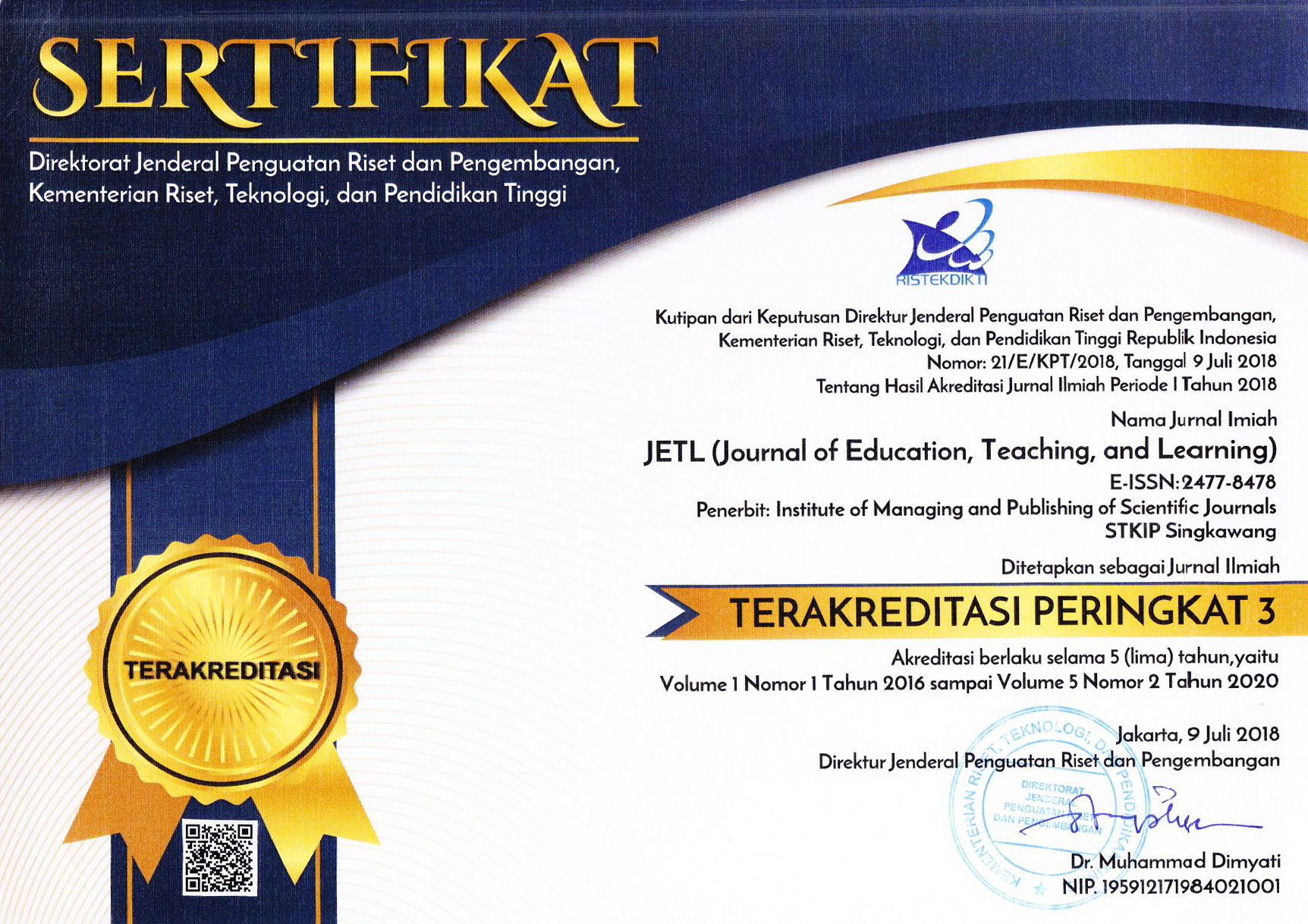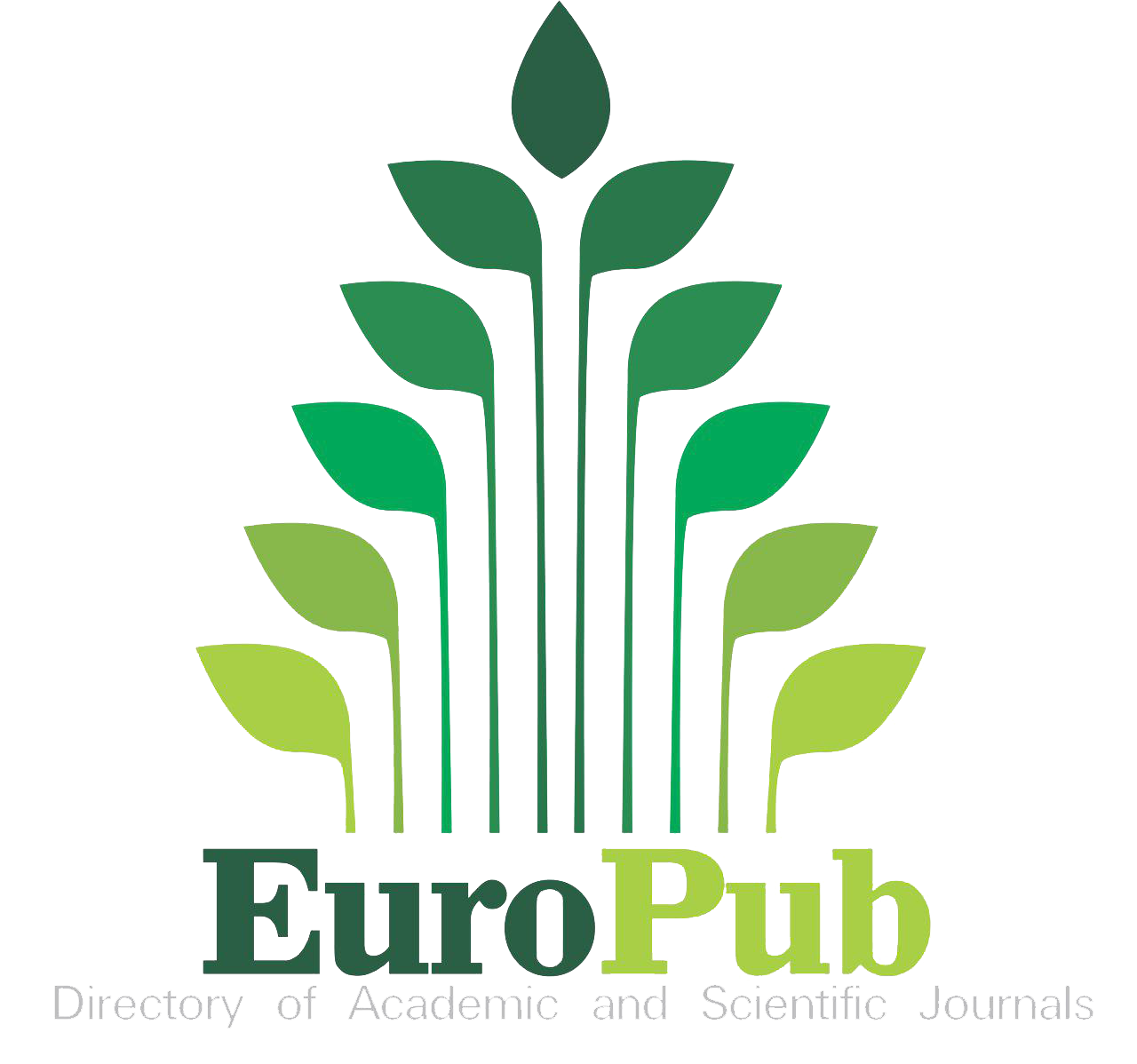Development of TIMSS Model Test to Measure The Number Sense Ability of Junior High School Students
Abstract
Keywords
Full Text:
PDFReferences
Australian Education Council (AEC). 1991. A National Statement on Mathematics for Australian School. Melbourne: Education Council and Curriculum Coorporation.
Fosnot. 2001. Young Mathematicians at Work: Constructing Number Sense Addition and Substraction. Portsmounth, NH: Heineman.
Gregory & Bankov. 2006. Exploring The Change in Bulgarian Eighth-Grade Mathematics Performance from TIMSS 1995 to TIMSS 1999 in S. J. Howie & T. Plomp (Eds.),Contexts of Learning Mathematics and Science (p. 245-264). New York, NY: Routledge.
Hobri. 2009. Metode Penelitian Pengembangan. Jember: FKIP Universitas Jember.
Lessani, Abdolreza. et al. 2014. Effects of Malaysian Secondary Schools Mathematics Teachers Familiarity with TIMSS on Students Achievement in Mathematics. International Journal of Education and Research, 2(8): 99-110.
Marilyn, Burns. 2007. About Teaching Mathematics: A K-8 Resource. 3rd ed.Sausalito, CA: Math Solutions.
Mcintosh & Reys. 1992. A Proposed Framework for Examining Basic Number Sense. For The Learning of Mathematics, 12(3), 2-8.
Mullis, et. al. 2000. TIMSS 1999 International Science Report. Chessnut Hill: Boston Collage.
Mullis, et. al. 2009. TIMSS 2011 Assessment Frameworks. Chestnut Hill, MA: TIMSS & PIRLS International Study Center.
Mullis, et. al. 2012. TIMSS 2011 International Result in Mathematics. Chestnut Hill, MA: TIMSS & PIRLS International Study Center.
NCTM. 1989. Curriculum and Evaluation Standards for School Mathematics. Reston.
NCTM. 2000. Principles and Standards for School Mathematics. Reston, VA: National Council of Teachers of Mathematics.
Nurmaulisihitni. 2014. Number Sense Bentukan Siswa dalam Menyelesaikan Soal Operasi Hitung Bilangan Bulat di Kelas VII Madrasah Tsanawiyah Negeri. (online). http:// www.jurnal.untan.ac.id. (accessed 23 Mei 2018).
Pilmer. 2008. Number Sense, Novia Scotia School for Adult Learning. Department of Labour and Workforce Development.(Online).http://www.gonssal.ca/documents/NumberSense.pdf/. (accessed 3 Juni 2018).
Prasetyo & Rudhito. 2016. Analisis Kemampuan dan Kesulitan Siswa SMP dalam Menyelesaikan Soal Bilangan Model TIMSS. Jurnal Pengajaran MIPA, 21(2), 122-128.
Ruslan, Witra and Darwis. 2016. Pengembangan Tes Kemampuan Pemahaman Konsep, Prinsip dan Skill dalam Mata Pelajaran Matematika dikelas VII SMP. (online). http://www.eprints.unm.ac.id. (accessed 15 Juli 2018).
Stanislas. 2011. The Number Sense How The Mind Creates Mathematics. New York: Oxford University Press.
Tosto, Maria. 2013. Development and Validation of a Mathematics-number sense Web-based Test Battery. Universiti Teknologi Malaysia, Johor, Malaysia.
Wilfred, Cockroft. 1982. Mathematics Counts: Report of The Committee of Inquiry into The Teaching of Mathematics in Schools. London: HMSO.
DOI: http://dx.doi.org/10.26737/jetl.v3i2.783
Refbacks
- There are currently no refbacks.

This work is licensed under a Creative Commons Attribution-NonCommercial 4.0 International License.
Published by:
Institute of Managing and Publishing of Scientific Journals STKIP Singkawang
Sekolah Tinggi Keguruan dan Ilmu Pendidikan (STKIP) Singkawang
Address : STKIP Singkawang, Jalan STKIP - Kelurahan Naram Singkawang, Kalimantan Barat, INDONESIA, 79251
No. Telp. : +62562 420 0344
No. Fax. : +62562 420 0584
JETL (Journal of Education, Teaching, and Learning)
e-ISSN : 2477-8478
p-ISSN : 2477-5924

Editor in Chief Contact: [email protected] / Wa: +6282142072788
Publisher Contact: [email protected] / Wa: +6282142072788
Management Tools
JETL Indexed by:
JETL (Journal of Education, Teaching, and Learning) is licensed under a Creative Commons Attribution-NonCommercial 4.0 International License.











